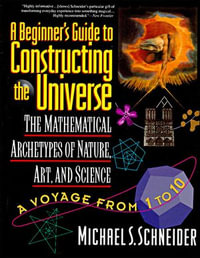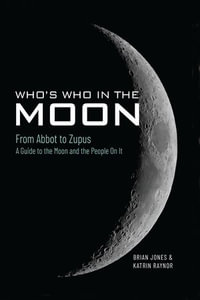
Who Owns the Moon?
Extraterrestrial Aspects of Land and Mineral Resources Ownership
By: Virgiliu Pop
eText | 16 November 2008
At a Glance
eText
$239.00
or
Instant online reading in your Booktopia eTextbook Library *
Read online on
Desktop
Tablet
Mobile
Not downloadable to your eReader or an app
Why choose an eTextbook?
Instant Access *
Purchase and read your book immediately
Read Aloud
Listen and follow along as Bookshelf reads to you
Study Tools
Built-in study tools like highlights and more
* eTextbooks are not downloadable to your eReader or an app and can be accessed via web browsers only. You must be connected to the internet and have no technical issues with your device or browser that could prevent the eTextbook from operating.
This work investigates the permissibility and viability of property rights on the celestial bodies, particularly the extraterrestrial aspects of land and mineral resources ownership. In lay terms, it aims to find an answer to the question Who owns the Moon? The first chapter critically analyses and dismantles with legal arguments the issue of sale of extraterrestrial real estate, after having perused some of the trivial claims of celestial bodies ownership. The only consequence these claims have on the plane of space law is to highlight the need for a better regulation of extraterrestrial landed property rights. Next, the work addresses the apparent silence of the law in the field of extraterrestrial landed property, scrutinizing whether the factual situation on the extraterrestrial realms calls for legal regulations. The sources of law are examined in their dual dimension that is, the facts that have caused and shaped the law of extraterrestrial real estate, and the norms which express this law. It is found that the norms and rules regarding property rights in the celestial realms are rather limited, failing to define basic concepts such as celestial body. The following chapter examines precisely this issue, pondering whether asteroids and comets are immovable land-like territorial extensions that cannot be legally appropriated, or floating movable goods, capable of being captured and reduced into private ownership. The employment of the spatialist and functionalist approaches, the use of the criterion of actual movability from orbit by human action, and original theories such as the analogy between the legal status of asteroids and icebergs, are considered, concluding that some extraterrestrial resources are not, legally speaking, celestial bodies. An examination follows of the relationship between appropriation under international law, and civil law appropriation, namely whether the non-appropriation principle in the Outer Space Treaty on the international plane, results also in the prohibition of the appropriation of the celestial bodies on the private property rights plane. It is offered that, while appropriation of land can exist outside the sphere of sovereignty, its survival is dependent upon backing from a sovereign entity, yet such endorsement would be unlawful as a means of national appropriation. The next chapter answers to the main question of this thesis, offering that de lege lata the extraterrestrial realms, as a commons, belong to everybody and nobody . The contents of Res communis is duly scrutinized. Res publica is then presented together with the Public Trust Doctrine . The commons regime currently accepted by most space actors is being challenged on two fronts. On the left, the adepts of the Common Heritage of Mankind paradigm have enacted the Moon Agreement, effectively planting the Marxist standard in the lunar soil. The egalitarian regime of extraterrestrial resource development would sanction the culture of entitlement, favouring a fair outcome over fair process . Such an approach has failed on earth and is poised to fail in outer space, as argued in the following chapter. On the right, the adepts of the frontier paradigm seek to promote individualism, competition, economic liberty, efficiency and laissez-faire economics all linked to a privatization of the international public domain. The frontier paradigm has proven its worth on our planet, and it most likely will do so in the extraterrestrial realms. Property rights are a useful engine and, in al likelihood, a precondition for pushing forward the development of the extraterrestrial realms. Securing property rights would be more beneficial to humankind, compared to the alternative of keeping the extraterrestrial realms undeveloped. The last chapter addresses the lex lata status of
Read online on
Desktop
Tablet
Mobile
ISBN: 9781402091353
ISBN-10: 1402091354
Published: 16th November 2008
Format: PDF
Language: English
Publisher: Springer Nature
You Can Find This eBook In
This product is categorised by
- Non-FictionBusiness & Management
- Non-FictionLawJurisprudence & General Issues
- Non-FictionLawInternational LawInternational Law of TransportInternational Space & Aerospace Law
- Non-FictionScienceAstronomy, Space & Time
- Non-FictionEngineering & TechnologyTransport Technology & TradesAerospace & Aviation Technology
- Non-FictionEngineering & TechnologyOther Technologies & Applied SciencesMining Technology & Engineering
- Non-FictionLawLaws of Specific JurisdictionsCompany LawCommercial Law
- Non-FictionSciencePhysicsApplied PhysicsAstrophysics
- Non-FictionLawInternational Law
- Economics, Finance, Business and Management

























